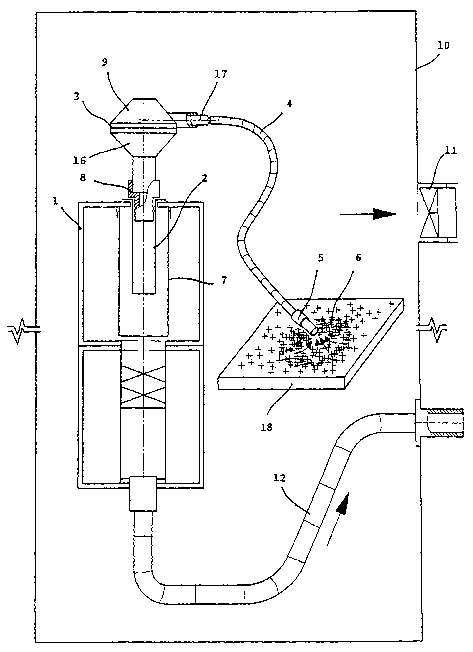Some of the information on this Web page has been provided by external sources. The Government of Canada is not responsible for the accuracy, reliability or currency of the information supplied by external sources. Users wishing to rely upon this information should consult directly with the source of the information. Content provided by external sources is not subject to official languages, privacy and accessibility requirements.
Any discrepancies in the text and image of the Claims and Abstract are due to differing posting times. Text of the Claims and Abstract are posted:
| (12) Patent Application: | (11) CA 2463383 |
|---|---|
| (54) English Title: | POLLEN CLEANING METHOD AND DEVICE |
| (54) French Title: | PROCEDE ET DISPOSITIF DE NETTOYAGE DU POLLEN |
| Status: | Deemed Abandoned and Beyond the Period of Reinstatement - Pending Response to Notice of Disregarded Communication |
| (51) International Patent Classification (IPC): |
|
|---|---|
| (72) Inventors : |
|
| (73) Owners : |
|
| (71) Applicants : |
|
| (74) Agent: | NORTON ROSE FULBRIGHT CANADA LLP/S.E.N.C.R.L., S.R.L. |
| (74) Associate agent: | |
| (45) Issued: | |
| (86) PCT Filing Date: | 2002-06-17 |
| (87) Open to Public Inspection: | 2003-05-22 |
| Availability of licence: | N/A |
| Dedicated to the Public: | N/A |
| (25) Language of filing: | English |
| Patent Cooperation Treaty (PCT): | Yes |
|---|---|
| (86) PCT Filing Number: | PCT/CZ2002/000035 |
| (87) International Publication Number: | WO 2003041840 |
| (85) National Entry: | 2004-04-08 |
| (30) Application Priority Data: | ||||||
|---|---|---|---|---|---|---|
|
The basis of the pollen cleaning method is that the contaminated pollen (6) is
sucked by airflow carrying the pollen to the conical part (16) of the
separator (3) made of insulating material where pure pollen particles fall
through the separator onto the filter (2) while the impurities rotate in
electrostatic field generated by separator (3) friction. The device used for
implementation of this method consists of a suction unit (1) with a filter
(2). To the filter is led the separator outlet (3). In the area of the
greatest separator diameter, the outlet of the suction line of a variable
diameter is tangentially connected to the separator (3) incluidng a suction
part (5) for contaminated pollen (6) suction.
La base de ce procédé de nettoyage du pollen consiste à aspirer le pollen contaminé (6) à l'aide d'un écoulement d'air qui transporte le pollen vers la partie conique (16) du séparateur (3) constitué d'un matériau isolant, dans lequel les particules de pollen pur tombent à travers le séparateur sur le filtre (2) alors que les impuretés tournent dans un champ électrostatique généré par le frottement du séparateur (3). Le dispositif utilisé pour la mise en oeuvre de ce procédé comprend une unité d'aspiration (1) avec un filtre (2). L'orifice de sortie du séparateur (3) débouche sur le filtre. Dans la zone de plus grand diamètre du séparateur, l'orifice de sortie de la ligne d'aspiration d'un diamètre variable est relié tangentiellement au séparateur (3) qui comprend une partie d'aspiration (5) pour l'aspiration du pollen contaminé (6).
Note: Claims are shown in the official language in which they were submitted.
Note: Descriptions are shown in the official language in which they were submitted.

2024-08-01:As part of the Next Generation Patents (NGP) transition, the Canadian Patents Database (CPD) now contains a more detailed Event History, which replicates the Event Log of our new back-office solution.
Please note that "Inactive:" events refers to events no longer in use in our new back-office solution.
For a clearer understanding of the status of the application/patent presented on this page, the site Disclaimer , as well as the definitions for Patent , Event History , Maintenance Fee and Payment History should be consulted.
| Description | Date |
|---|---|
| Application Not Reinstated by Deadline | 2007-06-18 |
| Time Limit for Reversal Expired | 2007-06-18 |
| Deemed Abandoned - Failure to Respond to Maintenance Fee Notice | 2006-06-19 |
| Inactive: IPC from MCD | 2006-03-12 |
| Inactive: Cover page published | 2004-06-11 |
| Inactive: Notice - National entry - No RFE | 2004-06-09 |
| Inactive: Inventor deleted | 2004-06-09 |
| Application Received - PCT | 2004-05-11 |
| National Entry Requirements Determined Compliant | 2004-04-08 |
| Application Published (Open to Public Inspection) | 2003-05-22 |
| Abandonment Date | Reason | Reinstatement Date |
|---|---|---|
| 2006-06-19 |
The last payment was received on 2005-05-20
Note : If the full payment has not been received on or before the date indicated, a further fee may be required which may be one of the following
Please refer to the CIPO Patent Fees web page to see all current fee amounts.
| Fee Type | Anniversary Year | Due Date | Paid Date |
|---|---|---|---|
| Basic national fee - standard | 2004-04-08 | ||
| MF (application, 2nd anniv.) - standard | 02 | 2004-06-17 | 2004-05-05 |
| MF (application, 3rd anniv.) - standard | 03 | 2005-06-17 | 2005-05-20 |
Note: Records showing the ownership history in alphabetical order.
| Current Owners on Record |
|---|
| JIRI TOMEK |
| Past Owners on Record |
|---|
| None |